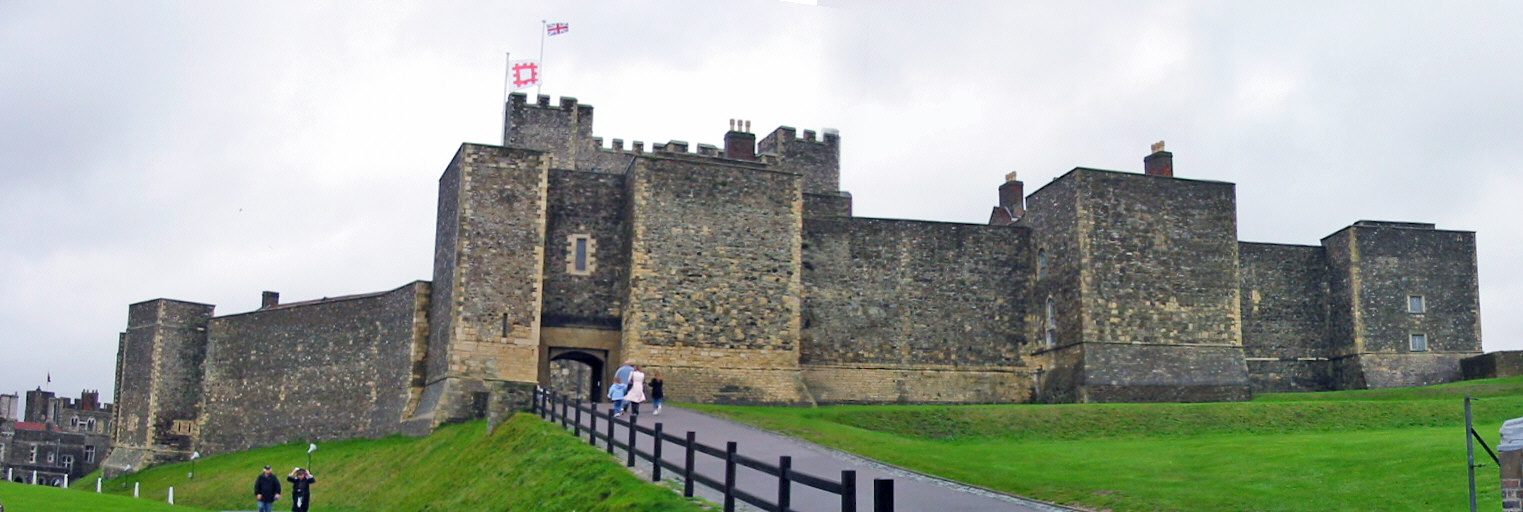Great Tower: The building and Evolution of Henry II's Keep at Dover Castle was organized by English Heritage and the Castle Studies Group. The first two days of the conference was held at the Society of Antiquaries in London, followed by a visit to the site itself.

About 100 people attended the conference, which included papers on a wide range of topics associated with the castle and its development. One of the main papers was given by the historian John Gillingham who contends that Henry II undertook major rebuilding of the castle to be a showpiece palace in order to impress visitors who were coming to see the shrine of the murdered Archbishop of Canterbury, Thomas Becket (see our earlier article on this topic for more information).
Victoria Dennis, one of the delegates who attended the conference, reported to Medievalists.net that "other historical papers filled in the picture on Henry’s crossings of the channel, his other square keeps, and his architectural patronage in general. All the papers contained material of interest. I admit I should have realised - but hadn’t - just how unimportant Dover was to a King whose other domains were in Normandy, until the Becket pilgrimage and the diplomatic activity in and relating to Flanders in his latter years."
The second day of the conference focused on the efforts by English Heritage to restore the castle and make it look like as it was in the 12th century. Victoria Dennis notes that "although there is a fine introductory exhibition in the inner bailey on Henry and his new great tower it includes very little on how the redisplay was done, the principles on which it was done and the evidence for the furnishings chosen."
The trip to Dover Castle itself allowed the delegates to tour the castle with representatives of English Heritage who worked on its restoration. Victoria Dennis explains that English Heritage "had to work in a building with major more recent features, such as 15th century windows and fireplaces and 18th century brick vaulted ceilings, which could neither be removed nor permanently concealed. Nor could the walls be plastered, boarded up or directly painted.
"This meant, among other things, that instead of a painted decorative scheme on the walls they were obliged to produce a similar effect using textile hangings - which at one point meant creating a hanging pretending to be a trompe l’oeil painting of a hanging! The 15th century wall fireplaces aren’t hidden; they have fires (real ones) lit in them, although in the 12th century the rooms would have had braziers or central fireplaces. Here is where I feel a little more explanation to the public would be desirable."
Another member of the audience pointed out that much of the material used as a basis for research was from Scandinavia and very little Mediterranean influence is shown, perhaps less than one might expect of a King who had married his daughter to the King of Sicily. Also, officials from English Heritage pointed out that no single artefact was exactly copied from a surviving original; all were tweaked to be slightly different, in case visitors were deceived into thinking that the original was owned by Henry II and would have been at Dover in the 1180s.
Victoria Dennis concludes that "the attention to detail in the furnishing – the miniver bedspreads, Limoges enamel candlesticks, the turned, carved, painted and gold leafed chairs - is admirable, and the lavishness, colourfulness and impressiveness of the general effect is stunning.
Certainly nobody who visits the Great Tower will ever again envisage 12th-century royalty hunkering down in monochrome stone-walled rooms with only a bearskin or two for luxury, and that’s certainly a major contribution to popular understanding of the period."
Dover is well known as a castle of true international significance. The impressive walls, gates, towers, and internal buildings were almost entirely rebuilt from 1179, largely by King Henry II (1154–89), though completed during the reigns of John (1199–1216) and Henry III (1216–72) in the early 13th century. Henry II’s great tower is the last and one of the most elaborate tower keeps built in the Anglo-Norman tradition, featuring a complex forebuilding, generous accommodation, two chapels, and a sophisticated dual water supply.
We thank Victoria Dennis for providing us with the details of the conference. Victoria writes the blog Oltra Mar.